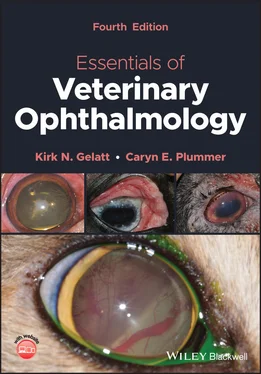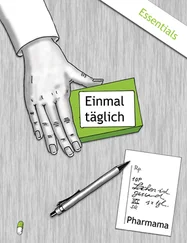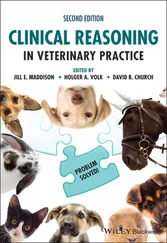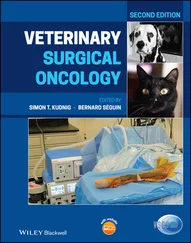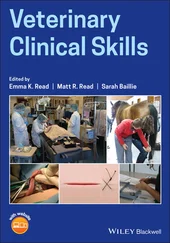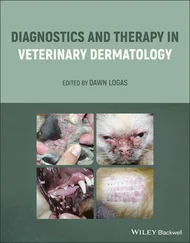Cholinergic agonists such as pilocarpine decrease outflow resistance by contraction of the ciliary muscle and subsequent spreading of the TM. This effect is rapid, such that intravenous administration of pilocarpine to vervet monkeys results in a near‐instantaneous decrease in outflow resistance, suggesting that the effect may be mediated by a structure perfused by arteries. Ciliary muscle disinsertion and removal of the iris in nonhuman primates obliterate this acute response to pilocarpine, suggesting that it is mediated completely by ciliary muscle contraction rather than a direct effect on the TM. The M3 subtype of the muscarinic receptor is strongly expressed in the ciliary muscle and thought to mediate the changes in outflow facility in response to cholinergic agonists. Because the effect of cholinergic agonists on trabecular outflow (increase) is greater than that on uveoscleral outflow (decrease), the net effect is an increase in AH outflow and concomitant decrease in IOP. As expected, cholinergic antagonists, such as atropine, decrease traditional outflow and increase nontraditional outflow by similar mechanisms.
Many other influences on the rate of AH formation and regulation of IOP have been proposed. For example, a center in the feline diencephalon has been found that, when stimulated, causes alterations in the IOP. Central nervous system (CNS) regulation of IOP is poorly understood, however, and hormonal control of AH production may be involved.
Methods to Measure Aqueous Dynamics
Both invasive and noninvasive methods are used to investigate AH dynamics, and normative values have been described in domestic and laboratory animal species ( Table 2.8). Invasive studies are more difficult to study in animals as the uveal tissues quickly respond to these “invasions” and can reduce the study objectives, but these early methods were essential and formed the basis for later noninvasive methods. They usually measured the dilution of intracamerally injected substances over short time periods. With the AH volume within the anterior and posterior chambers measured and the amount of dilution of the tracer estimated, the total amount of AH produced per unit of time could be determined. Knowledge of anterior and posterior chamber volumes is critical to determining the rate of AH production ( Table 2.9).
Fluorophotometry is a noninvasive method for studying AH flow dynamics, for evaluating ocular pharmaceutical agents used to treat glaucoma, and for determining iris permeability in both normal and disease states. Fluorophotometry of the anterior chamber and vitreous can noninvasively assess the permeability of the BRB in the normal and diseased eye. Fluorophotometry has been used extensively in humans, nonhuman primates, rabbits, cats, dogs, and, most recently, the red‐tailed hawk. This tool can also be used to assess permeability coefficients of the BAB involved in health and disease, determine the effects of selected drugs on the BAB, and mechanisms by which drugs affect the AH dynamics.
Table 2.8 Methods to investigate aqueous humor dynamics.
| I |
Techniques to investigate the formation of aqueous humor |
|
Cannulation of anterior chamber: constant rate/constant pressure perfusion |
|
Direct view/measurement of newly formed aqueous humor |
|
Use of markers in aqueous humor (radioactive, fluorescein, para ‐aminohippuric acid). Measure the decay rate of intracamerally injected isotopes. Fluorophotometry, a noninvasive method, is primarily used today |
| II |
Procedures to investigate the exit of aqueous humor |
|
Ocular perfusion to lower IOP |
|
Perilimbic suction cup |
|
Tonography (conventional outflow/pressure sensitive) |
|
Use of markers (fluorescein, nitrotetrazolium, latex spheres, radioactive tracers). Both conventional and uveoscleral outflow routes are measured |
| III |
Methods to measure the episcleral venous pressure |
|
Partial to complete collapse of the episcleral veins to affect alteration in the blood flow |
|
Torsion balance |
|
Pressure chamber (filled with air or saline) |
|
Air jet |
|
Ocular compression |
|
Direct cannulation and measurement by transducer |
To determine AH outflow invasively, perfusion of the anterior chamber of in vivo and ex vivo eyes has been performed in numerous species. The constant pressure perfusion technique is the most frequently used. It involves maintaining a constant level of IOP with periodic, intermittent, or continuous minivolumes of perfusate. In the perfusion decay test, either a preselected volume of perfusate is injected or a preselected IOP is achieved. Once the perfusate has been injected, the time for the IOP to regain the baseline or preexisting measurement is obtained. In many ways, the perfusion techniques are similar to the noninvasive tonography methods (and yield similar results).
Table 2.9 Comparative volumes of the chambers and select structures of the eye.
| Species |
Anterior chamber (ml) |
Posterior chamber (ml) |
Lens volume (ml) |
Vitreous volume (ml) |
| Human |
0.2 |
0.06 |
0.2 |
3.9 |
| Rabbit |
0.3 |
0.06 |
0.2 |
1.5 |
| Pig |
0.3 |
— |
— |
3.0 |
| Dog |
0.8 |
0.2 |
0.5 |
3.2 |
| Cat |
0.8 |
0.3 |
0.3 |
2.8 |
| Cow |
1.7 |
1.5 |
2.2 |
20.9 |
| Horse |
2.4 |
1.6 |
3.1 |
28.2 |
The percentages reported for normal uveoscleral outflow range from 30% to 65% in nonhuman primates, 15% in dogs, 13% in rabbits, 4–14% in humans, and 3% in cats. The horse appears to have an extensive uveoscleral outflow system, but the volume and percentage of the total outflow system have not been reported. Often uveoscleral outflow is now calculated as the difference between applanation tonography and the results from fluorophotometry.
Uveoscleral outflow pathway has been demonstrated using observable tracers measuring from 10.0 nm to 1.0 μm in diameter. As one would anticipate, the smaller‐diameter (i.e., pore) tracers penetrate into the different tissues to greater extents. After perfusion at different IOPs and for different time intervals, the eyes (especially the root of the iris, entire ciliary body, suprachoroidal space, and choroid, even as far posterior as the optic nerve) are examined by light microscopy, scanning electron microscopy, and transmission electron microscopy for these markers. These same methods have also demonstrated the ability of the trabecular endothelium and wandering macrophages to phagocytize particulate material within the outflow pathways. An alternative method to estimate the amount of uveoscleral outflow (either as μl or %) is by using radioactive isotopes injected into the anterior chamber; the time, amount of the isotope, or both are standardized. At the conclusion of perfusion, either the ocular tissues are dissected into the different sections and analyzed for radioactivity or the entire globe is sectioned and the radioactivity of each area is measured by scintillation counters.
Another key concept in the measurement of IOP is ocular rigidity ( k ), or the resistance offered by the fibrous tunics of the eye (i.e., sclera and cornea) to a change in intraocular volume. Ocular rigidity may also be defined as the change in IOP per incremental change in the intraocular volume; this resistance manifests as a change in IOP. Ocular rigidity is determined by Schiotz indentation tonometry, and it estimates the change in volume (open manometer system) when the instrument is placed on the cornea as well as after injections of exact volumes or preselected elevations in IOP. With applanation tonometry, ocular rigidity is not a factor! This logarithmic relationship between IOP and volume of the globe is
Читать дальше
